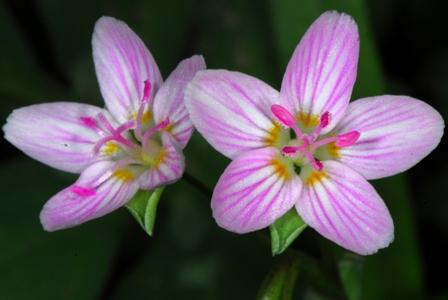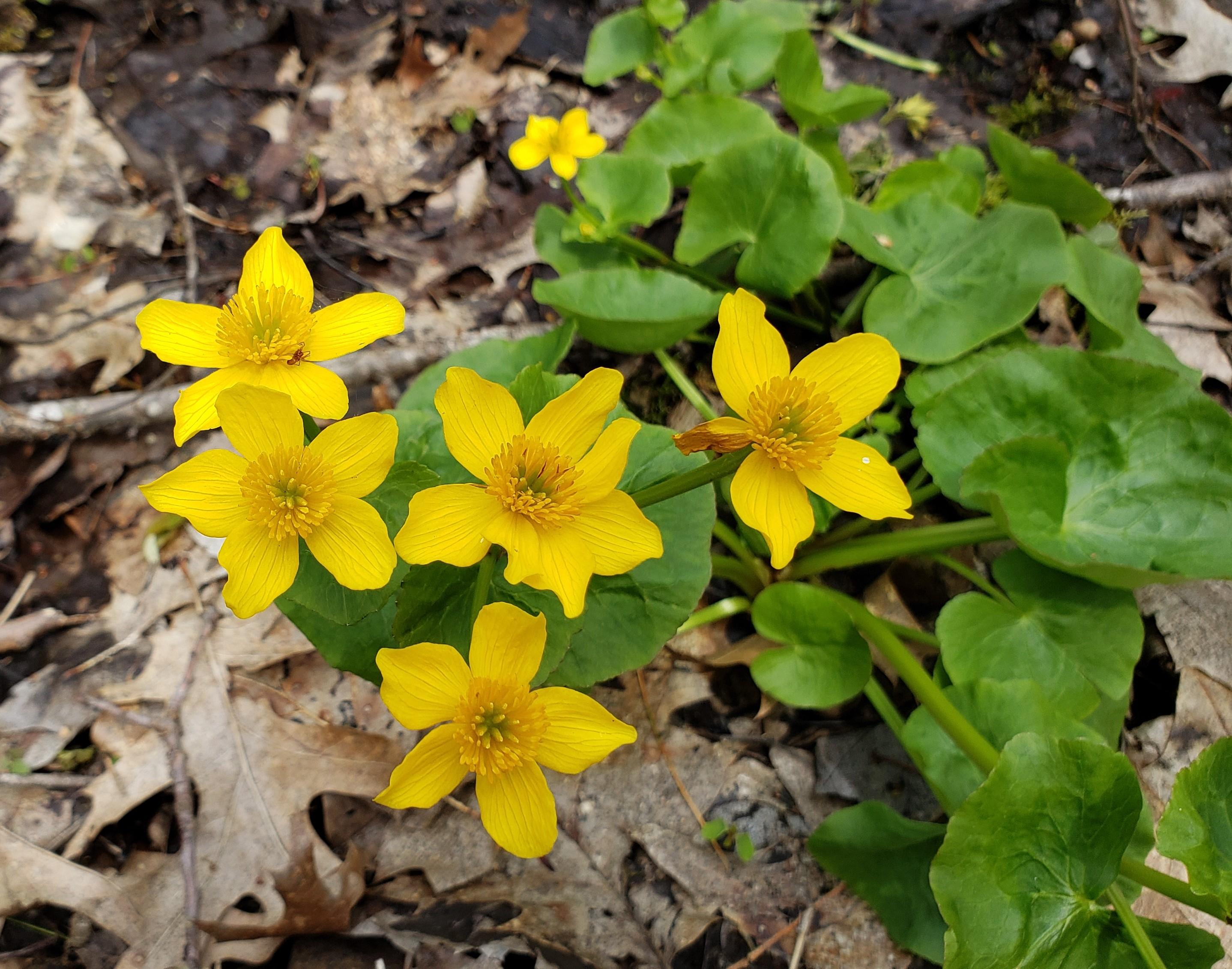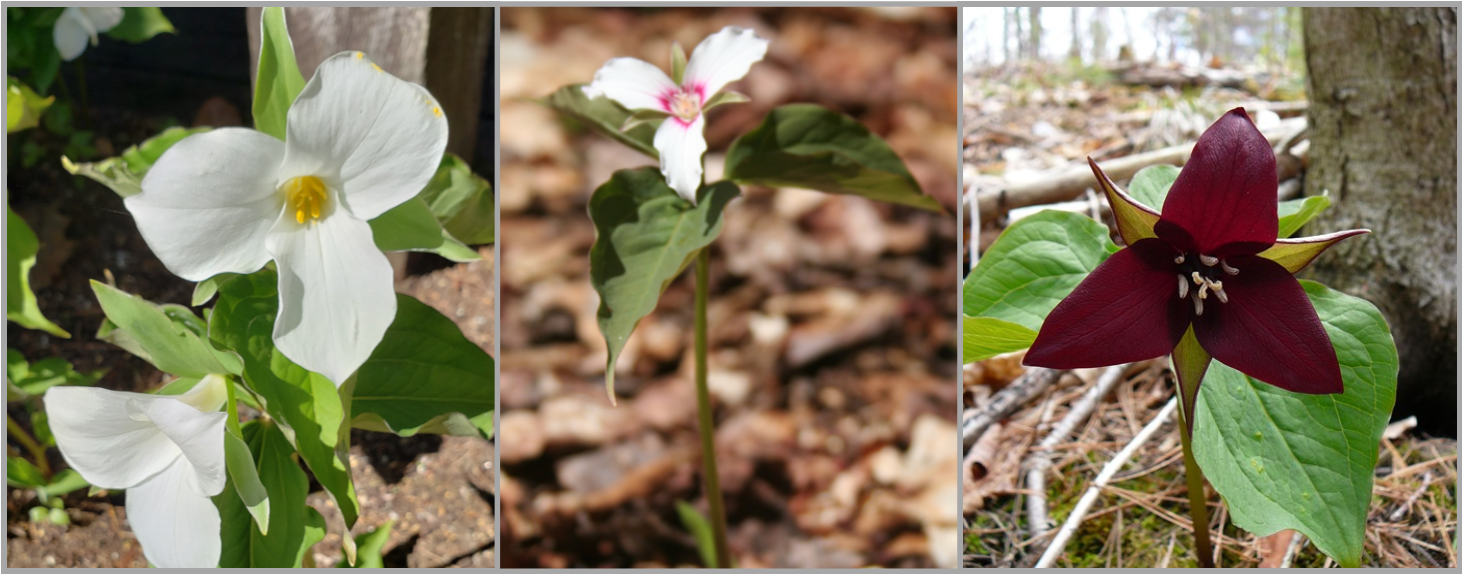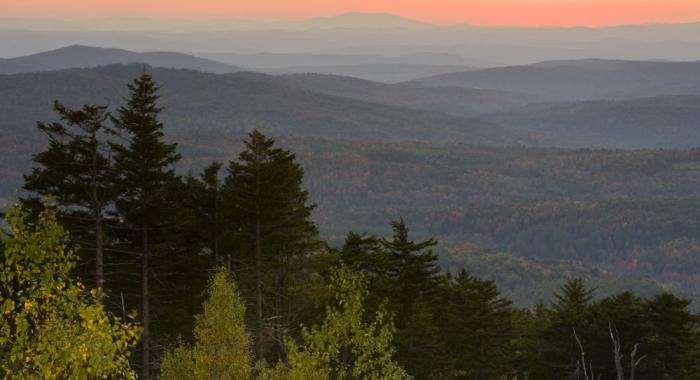Searching for new and returning life that is emerging from the forest floor.
- Tags:
- Conservation Easements,
- Wildlife

Right now is a great time to start exploring the forest floor for native wildflowers. It's even better exploring for them when you are able to identify them too! Photo of Polygala paucifolia by Stacie Powers
One of my favorite things to do this time of year is search for new and returning life that is emerging from the forest floor. Now that it is already mid-May, here in southeastern New Hampshire many wildflowers have already come and gone. However, those in mid- or northern New Hampshire may be just starting to bloom. This year, I haven’t been able to go to other regions of New Hampshire to look for flowers along trails, but I am lucky enough to have conserved forestlands right in my backyard to explore. I have a renewed appreciation for these lands in these times and I’m sure many of you do as well. If you don’t have a backyard, then you may be relying on public conservation lands to get out right now and appreciate these beautiful signs of spring.

There are many online resources, field guides, and applications for mobile phones that can be used to assist in identifying wildflowers. Some of my go-to’s for identifying New England plants in the field include:
- A copy of Peterson’s Field Guide for Northeastern Wildflowers.
- The website Go Botany by the Native Plant Trust. Go Botany is a user-friendly, dichotomous key which narrows down options by simple identifying features of a plant. This can include the number of petals (or sepals), leaf arrangement, and color of the flowers.
- I have also had some success using a phone application called “Picture This” which can help determine the type of plant by capturing a photo and loading it into the app.
- You could also try LeafSnap, a free application created by botanists and volunteers from universities and the Smithsonian Institute.
- If you already know the common name of a wildflower and want to learn the scientific name, or vice-versa, and want to learn more about it, you can refer to the New Hampshire Wildflower Database.
Spring ephemeral is the term used for many of New Hampshire's wildflowers that show off in the spring and then move on to a different life cycle where they wither away back underground after going through a reproductive phase. The short definition is growing over a short amount of time.
These plants take advantage of the time when the soil has warmed and sunlight reaches the forest floor before the tree leaves start to bud. Some other ephemerals do not require as much sunlight and are able to stay around throughout the season. One of the very first showy flowers that emerges as a spring ephemeral is Carolina Spring Beauty or Claytonia caroliniana. Have you seen this in your backyard? Another flower that you may observe during this time is the Blood-root or Sanguinaria canadensis. Blood-root may not sound like a nice time, but it is appropriately called this because the inside of the root is a dark red color. Both of these plants of known to exist in New Hampshire forests and floodplain areas.

Marsh Marigold or Caltha palustris is a long-lived wildflower in the butternut family (Ranunculaceae) that can be found in areas with wet soils. You still have time to go out and look for this one as it will be blooming from April until early June. It is most recognizable because of its five bright yellow sepals.

Trillium, also known as wakerobin, is one of my favorites. There are a few different species that are native to New Hampshire, including Painted trillium, White Trillium, and Red Trillium. I have been lucky enough to spot all three of these in New Hampshire!
White Trillium, or Trillium grandiflorum, is the largest of the three. You can find this one right outside of the Conservation Center’s front door!
Both Painted Trillium and White Trillium can be found in forests and in rocky areas. Red Trillium can also be found in wet lying areas in addition to these. You can usually have luck finding these when going for a hike in the forest.

Every year without fail, Blue Violets show up on my front lawn without any assistance. It's nearly impossible to miss these beautiful flowering plants which are pollinated by insects. They are fantastic nectar sources for bees and butterflies. The coloration around the lower petals are used as a nectar guide to show the pollinators where to go. There are many different species in the Viola genus that persist throughout New hampshire in a variety of different habitats. However, it can be difficult to discern the specific species because violets often hybridize.

Jack in-the-Pulpit is one of the most unique flowers that you will see in our forests starting to grow right now. At first, it may not look like a flower, however, it is in the same family as the peace lily that may live in your living room. The family is Arum, or Araceae family, that has just two known species existing in New Hampshire. The other local species in this family is the rarely seen Green Dragon or Dragonroot which grows in silver maple floodplain forests. The Araceae family is unique because the spadix, the spike inflorescence or flowering reproductive part, is enclosed in a spathe or leaf-like bracht.
Some of my favorite native wildflowers that are able to persist in shade on the forest floor will be blooming very soon. These include Bluebell, Pink Lady’s Slipper, Wild Geranium, Bunchberry, Sorrel, and Red Columbine.
If you are like me and love including some of our native flowers in your backyard landscaping to encourage native pollinators, UNH Cooperative Extension has created an amazing guide to native meadow wildflowers that you can find here.
What are some of your favorite wildflowers and when do you look forward to seeing them? Be sure to share these with us on social media by tagging @forestsociety.
Have fun searching for your favorites!
Stacie Powers is an Easement Steward for the Forest Society.

Conservation Easement Stewardship at the Forest Society
For every conservation easement the Forest Society accepts, we make a commitment to the landowner that we will protect the conservation values of their property forever.
